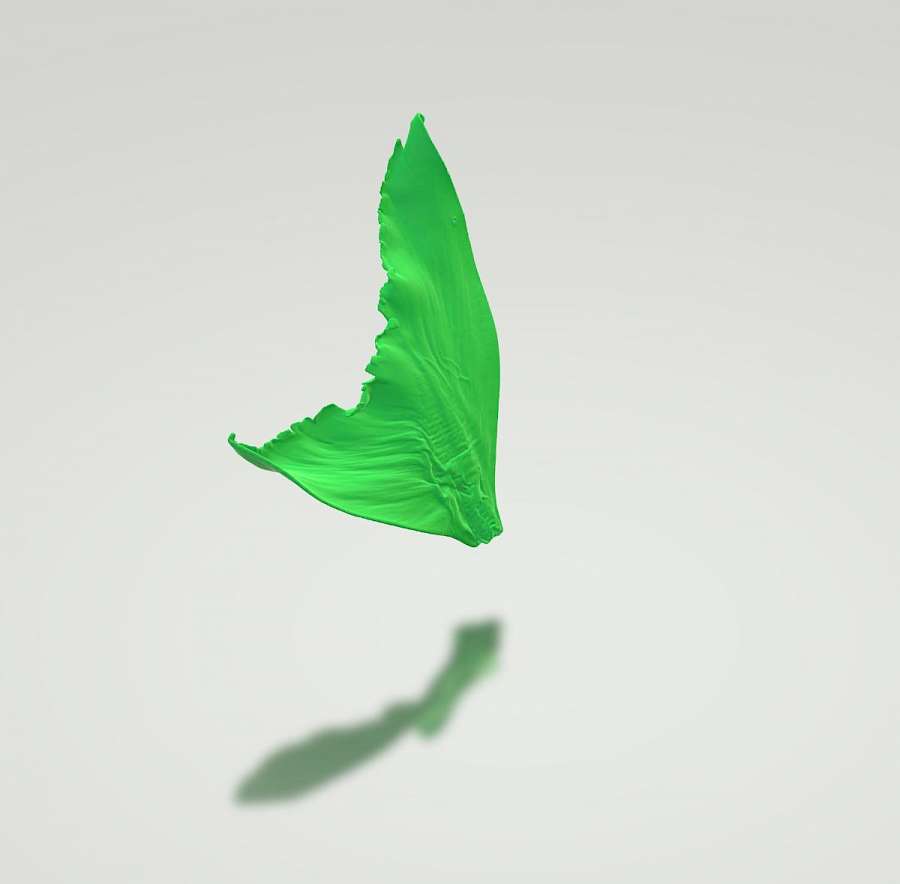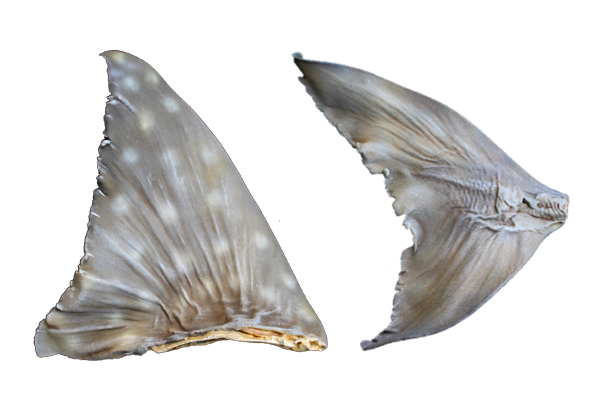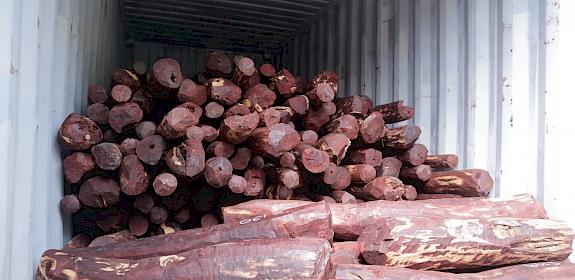TRAFFIC bites back at illegal wildlife traders with the world’s first-ever 3D-printed replica shark fins
Frontline law enforcement officials can now harness pioneering technology to combat the trafficking in shark fins; an illegal trade accelerating shark population declines globally.
Cape Town, South Africa, 4th May 2021— Identifying protected shark species purely from their fins – especially any caught and smuggled illegally – is an enormously challenging task. Knowing this, TRAFFIC has created a set of 3D printed and painted replica fins to assist customs officials and enforcement officers globally in this essential job to help curb the illegal wildlife trade.
The printed fins represent a dozen regularly traded, eleven of them CITES1-listed species, including Great Hammerhead, Oceanic Whitetip, and Silky sharks, created from 3D scans of real dried shark fins.
The demand for shark fins, especially from Asia, drives a lucrative yet illegal international trade, while more species are being re-classified as threatened with extinction.
Law enforcement officials around the world face the massive challenge of identifying shark fins in international trade to a species level in order to effectively enforce CITES. As if that was not difficult enough, they must correctly identify wildlife such as this alongside all the other contraband they’re looking out for.”

TRAFFIC fisheries trade expert Markus Burgener, based in South Africa.
“It’s quite an overwhelming task and due to these identification difficulties, it often results in shark fins from illegal sources not being identified as such."
Many customs and other law enforcement agencies involved in combatting wildlife trafficking worldwide are understaffed and under-equipped. This initiative aims to aid these agencies by providing an easy-to-use identification tool that allows for quicker and more confident decision-making on shark fin identification.
“These replica fins are expected to significantly improve the accuracy of active inspection, identification, and seizure of illegal shark fin consignments,” continued Markus Burgener. “They will help empower law enforcement officials the world over to more effectively disrupt the illegal trade in shark fins, which is causing significant detriment to our oceans.”
The 3D scan files and associated painting instructions for 22 fins are now available for free on the TRAFFIC website as part of the organisation’s ongoing efforts to combat this illegal trade.
During trials, law enforcement officials in South Africa involved in reviewing the replica fins and QR code concept were strongly supportive of their use in building fin identification capacity.
Simone Louw, Project Support Officer at TRAFFIC said: “Working with 3D replica fins has developed my identification skills to the point where I rarely need ID guides anymore. This is the level we want all customs officials to be at; to be able to identify at-risk shark species with confidence and ease.”

TRAFFIC developed the replica fins with the support of the South African Department of Forestry, Fisheries and Environment, and US shark expert Debra Abercrombie and with active input from several committed South African-based service providers.
The replica fins have been developed to be nearly impossible to differentiate from the real thing. A selective laser sintering process using nylon as the primary material forms part of the development process, giving the fins a slightly rough, sandpaper-like texture – similar to real dried shark fins found in trade.
Distinctive markings and colouration, which are crucial for accurate identification, are incorporated into the replica fins’ development. Comprehensive painting guidance is included in the downloadable files to ensure the 3D fins can be accurately replicated for use by law enforcement agencies across the world.
Global assessments estimate that between 26 and 73 million sharks are traded each year. But the actual figure is likely to be far higher, even when conservative values of unreported bycatch or illegal fishing are accounted for.
Currently, 46 species of sharks and rays are listed in Appendix I and Appendix II CITES, the international convention that governs international wildlife trade. Required permits should be issued when trading specific species of sharks listed in Appendices I or II, limiting or entirely prohibiting trade in their products.
Despite inclusion on CITES, stretched enforcement and a lack of technical capacity means that illegal shark fins frequently slip through the net and the illicit harvest and trafficking of shark products remain a global issue. This lucrative trade continues to be driven by demand for shark fins from East Asian consumer markets and exclusive restaurants where shark fin soup is prized for its perceived status value.
TRAFFIC is empowering law enforcement agencies the world over to combat the illegal shark fin trade with these 3D printed replica fins. Given the crucial trophic role sharks play within marine ecosystems, their decline may have long-term implications on marine biodiversity.
Notes:
Find out more and download the toolkit for 3D printing
1 Convention on the International Trade in Endangered Species of Wild Fauna and Flora
2 Shark species include:
- Bigeye Thresher Alopias superciliosus
- Blue Shark Prionace glauca
- Bowmouth Guitarfish Rhina ancylostoma
- Common Thresher Alopias vulpinus
- Giant Guitarfish Family: Glaucostegidae
- Great Hammerhead Sphyrna mokarran
- Oceanic Whitetip Carcharhinus longimanus
- Porbeagle Lamna nasus
- Scalloped Hammerhead Sphyrna lewini
- Silky Shark Carcharhinus falciformis
- Shortfin Mako Isurus oxyrinchus
- Wedgefish Family: Rhinidae
All species listed above are classified on the IUCN Red List as Vulnerable to Critically Endangered.
About the 3D replica shark fins toolkit
The online toolkit allows for the production of fin sets for training and fins for day-to-day use by law enforcement officials in situations where fin identification is required. The latter are printed with the name of the shark and type of fin, and a section where a dedicated QR code can be attached. When scanned with a cell-phone, this code links to fin-specific web pages, which provide additional information and guidance on the identifying features for that species.
About ReTTA

ReTTA is a TRAFFIC project aiming to Reduce Trade Threats to Africa’s Wild Species and Ecosystems. The project is funded by Arcadia—a charitable fund of Lisbet Rausing and Peter Baldwin.




